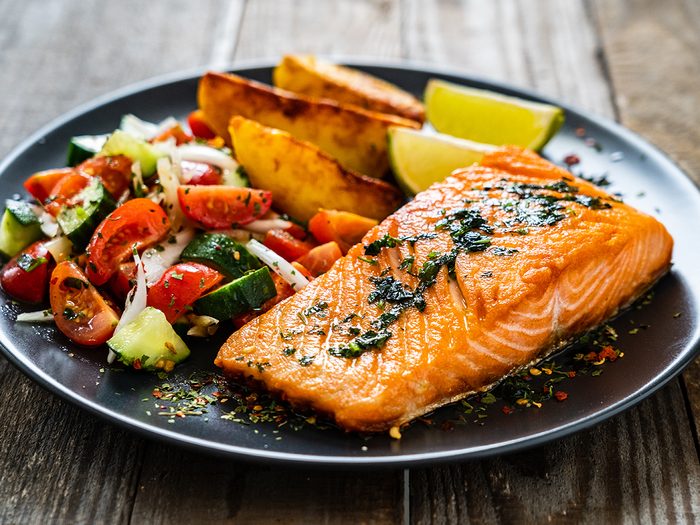
Which is the healthiest fish to eat?
Most fish is full of healthy fats, which make it a nutritious addition to any meal. And, since most fish is free from both saturated fats and trans fats, “it’s an overall really great lean protein source,” says Maiya Ahluwalia, registered dietitian and founder of Toronto-based nutrition counselling service Nourishing Balance.
The healthy fatty acids found in many types of fish, known as omega-3s, have a whole suite of health benefits. For instance, omega-3s are known for their anti-inflammatory properties and are essential to heart health. In fact, they’ve been shown to help prevent coronary heart disease.
Omega-3s are also great for brain health. Studies have shown that higher omega-3 consumption is associated with better cognitive function in adults over the age of 60.
“All you need is approximately two servings [of fish] a week to meet your omega-3 needs,” says Annie Tsang, a Vancouver-based registered dietitian. “Each serving is about 75 grams: think the size of a deck of cards.”
To get the most out of those weekly servings, find out the five healthiest fish to eat.
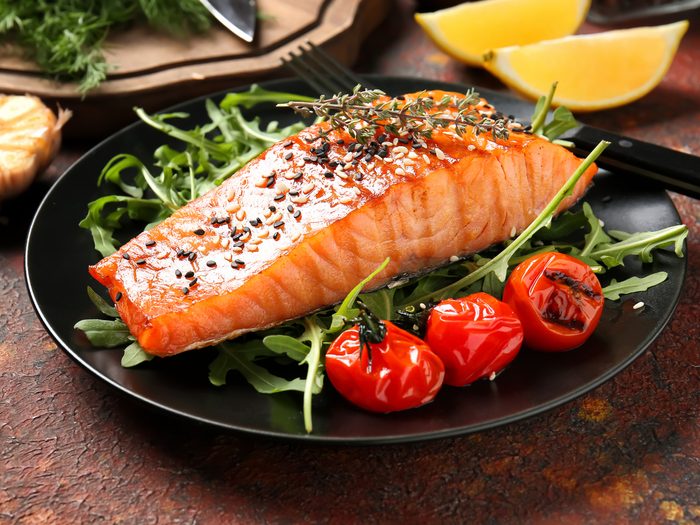
Salmon
Among fatty fish, salmon has the reputation as being the healthiest fish to eat—and for good reason. On top of its high omega-3 content, salmon’s pink colour comes from its rich levels of astaxanthin, an antioxidant that’s been linked to lowering cholesterol.
Salmon is also chock full of vitamin B12, which we need to form red blood cells and DNA, and which helps with the function and development of brain and nerve cells. “B vitamins are crucial building blocks in terms of overall health and wellbeing,” says Ahluwalia. Studies have also shown that B12 can slow the rate of brain volume loss in adults over the age of 60 and may help treat depression.
Brush up on the essential vitamins your body needs to stay healthy.
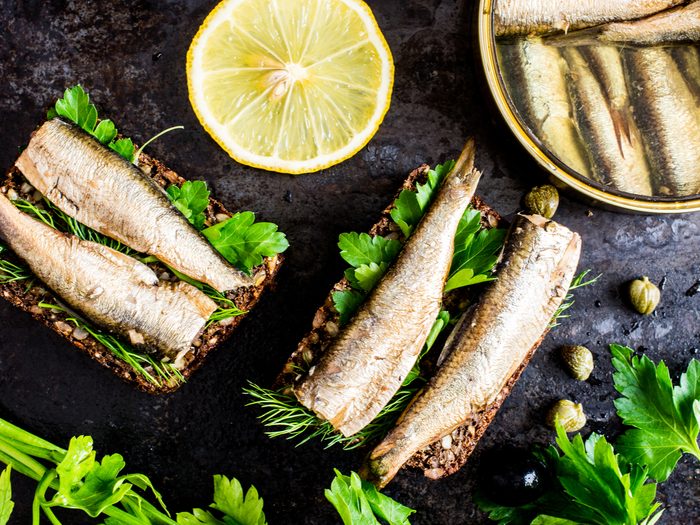
Sardines
Like salmon, sardines are a great source of omega-3, but they’re also an excellent source of calcium, which is integral to building strong bones. Sardines also naturally contain vitamin D, which can help prevent cardiovascular disease.
Sardines, which are usually bought in tins, are relatively inexpensive, making them a great option if you’re on a tight budget. However, when choosing which sardines to buy, make sure you look for MSC certification, which ensures that the fish are caught wild, not farmed, says Ahluwalia. Wild fish eat an all-natural diet, which means that they’re lower in saturated fats than farmed fish. Plus, farmed fish are more likely to have higher levels of contaminants and diseases, thanks to fish farms’ conditions.
“Canned fish is just as healthy if you choose the ones soaked in water or oil with no added salt,” says Tsang, adding that it’s also shelf-stable, so it lasts longer, doesn’t take up precious space in your fridge and you can buy it in bulk to make sure you always have fish on hand.
Find out which things you should never buy in bulk.
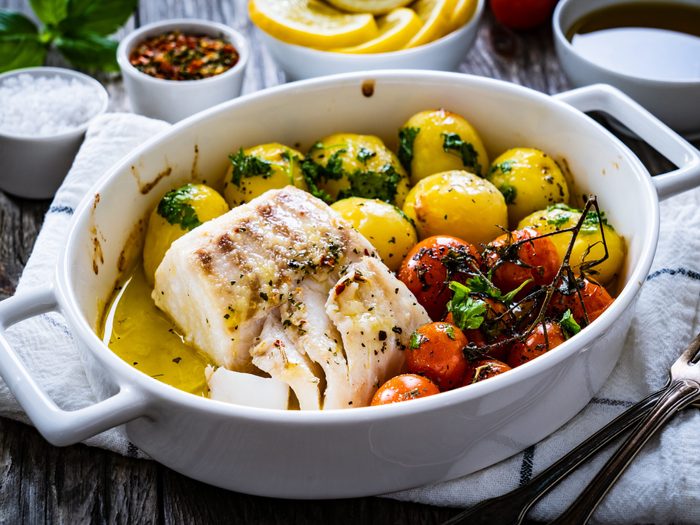
Cod
This white fish is rich in phosphorus, which helps your body use and store energy from food and works in conjunction with calcium to help build strong bones. Phosphorus also helps to regulate your heartbeat and promotes normal muscle and nerve function.
Cod also contains selenium, an essential trace mineral which plays a key role in maintaining thyroid hormone metabolism. A study in the International Journal of Endocrinology found that having enough selenium in the body can prevent thyroid disorders like hyperthyroidism, which can cause increased metabolism, undesired weight loss, a fast or irregular heart rate, muscle weakness and changes in appetite.
Thanks to its mild flavour, cod makes a perfect entry point for people who aren’t accustomed to shopping in the seafood aisle. “It’s great for picky eaters or those who don’t like the taste of fish,” says Ahluwalia. “I find cod really easy because it picks up on flavours a lot easier than other fish.” Go ahead and cook it with your favourite spices and make it taste however you’d like!
Check out 10 healing herbs and spices worth adding to your meals.
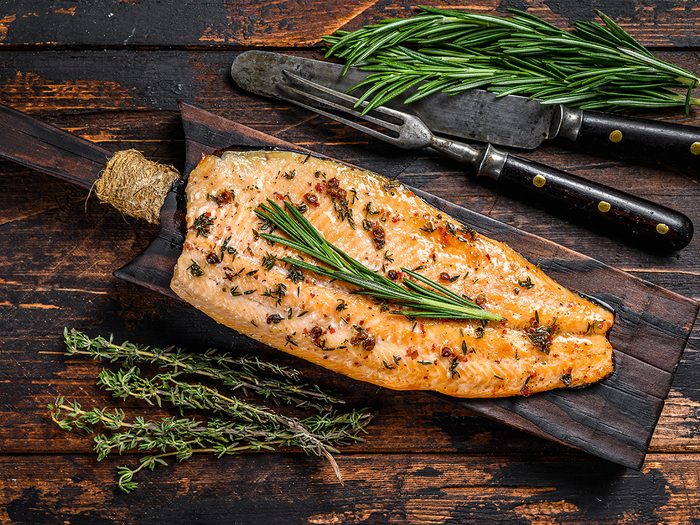
Rainbow Trout
Rainbow trout is high in omega-3 and full of essential nutrients like vitamin D, vitamin B12 and phosphorus. And, according to the Food and Drug Administration in the U.S., one of the biggest health benefits of the fish is that it contains low levels of mercury and other contaminants.
Human industrial activity like coal electricity generation and waste incineration releases mercury into the air. Eventually, that mercury makes its way into the water table when it rains. There, fish accumulate it in their muscles through absorption from the surrounding water and the prey they eat. The mercury tends to get concentrated as it goes up the food chain, so that bigger fish that eat smaller fish exposed to mercury typically have more of the chemical element in them.
Exposure to a high level of mercury can harm your brain, heart, kidneys, lungs and immune system—and prenatal mercury exposure can lead to a number of complications for the baby. Rainbow trout has some of the lowest levels of mercury, which makes it one of the healthiest fish to eat, especially during pregnancy and while breast feeding.
These are the foods everyone over 50 should be eating.
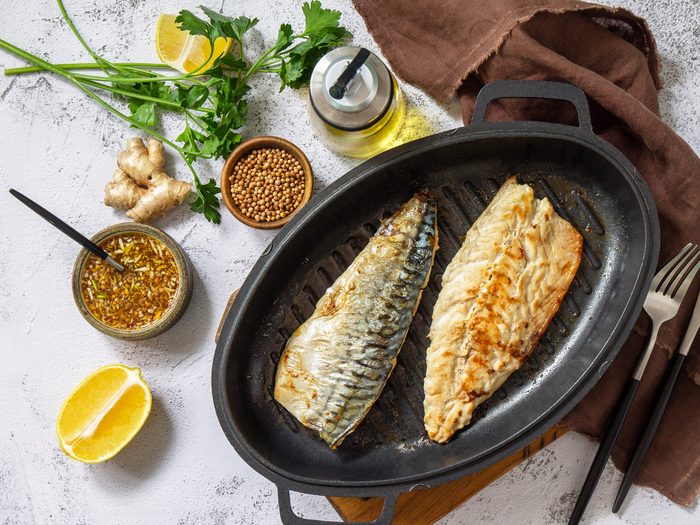
Mackerel
Mackerel is another healthy fish option that’s full of omega-3s and vitamin D, says Ahluwalia. It’s also rich in phosphorus, zinc, magnesium, potassium and vitamins B12, K, E and A. Mackerel also beats out all other fish in terms of its phosphatidylserine content. Phosphatidylserine is a fatty substance that promotes brain health, and according to a study published in the Journal of Clinical Biochemistry and Nutrition, may help prevent memory loss.
This saltwater fish also replenishes quickly, meaning it’s a sustainable choice that’s recommended by the Environmental Defense Fund.
One thing to be wary of, however, is the mercury level in certain mackerel. The King mackerel, for instance, has a relatively high level of mercury due to its size and position on the food chain and should be avoided.
Find out how to read nutrition labels like a pro.
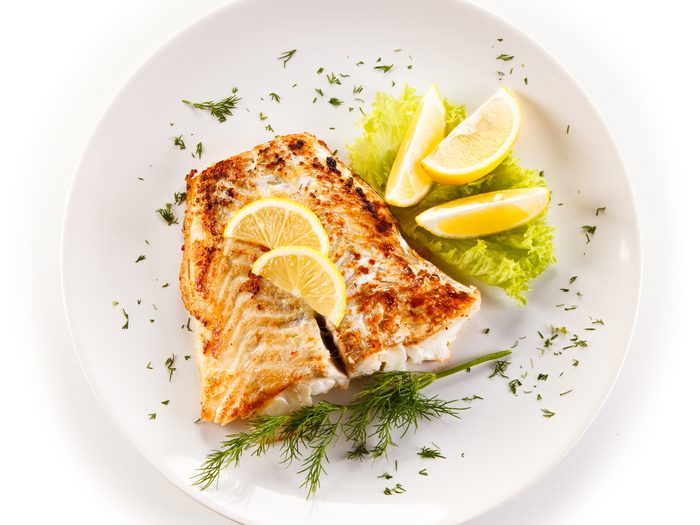
The healthiest way to prepare fish
Steaming fish plain is the healthiest option, but it’s also one of the least exciting. To add some flavour while still keeping the dish healthy, Ahluwalia suggests coating fillets with sesame oil and a bit of maple syrup and baking them in the oven. “Or, a bit of fresh lemon and dill with a bit of olive oil and garlic,” she says. (These are the healthiest cooking oils you can use.)
Since fish have shorter muscle fibres than other meats like beef, it needs to be cooked at a higher temperature for a shorter amount of time to keep it from drying out. Ahluwalia suggests cooking fish in avocado oil since it has a high smoke point. As an added bonus, avocado oil is high in monounsaturated fats.
Now that you know the healthiest fish to eat, find out the best foods for your brain.